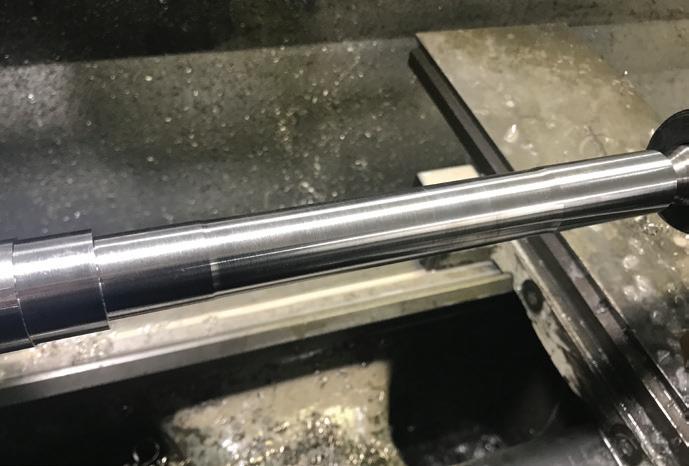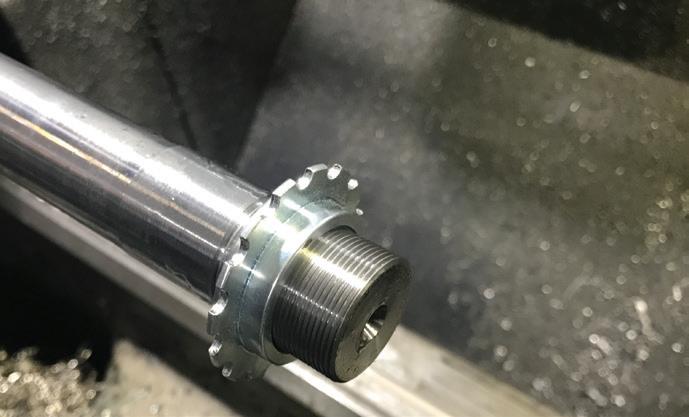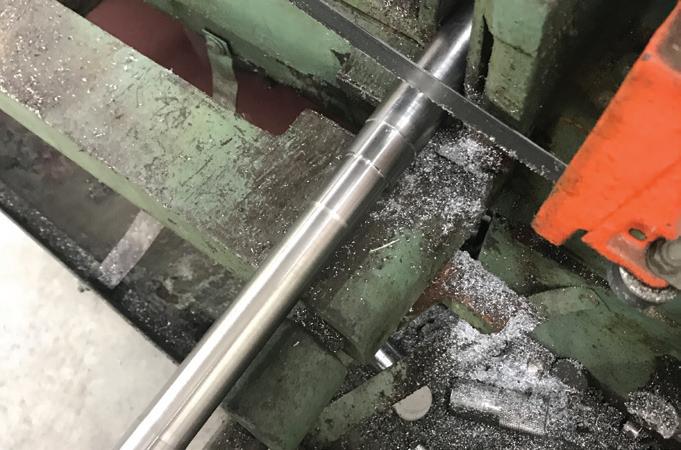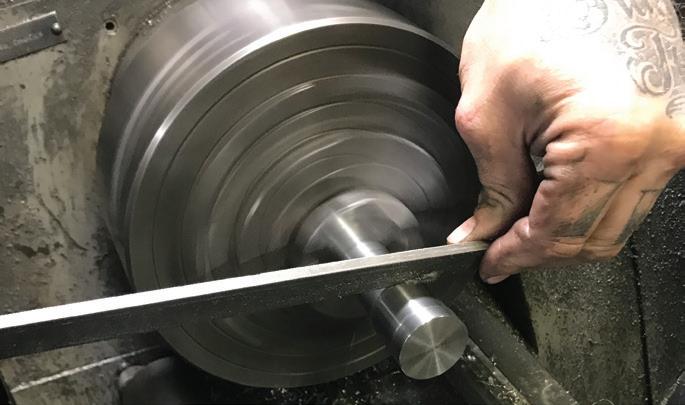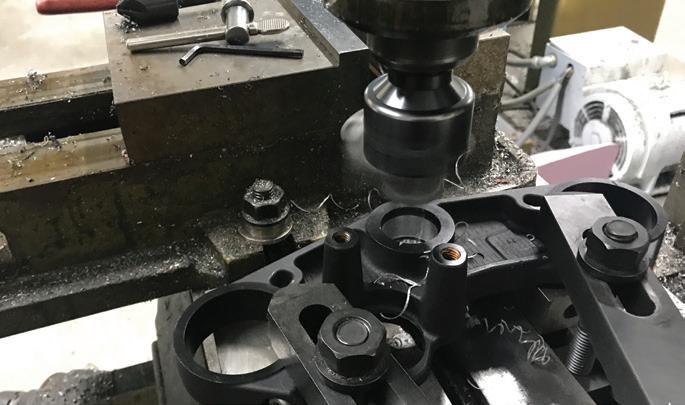
5 minute read
Big Will Walks Us Through The Steps

hen Chris and Heather Callen arrive at your shop and park the Cycle Source Magazine mobile command unit out front, you know you’re in for a W long night of motorcycle madness.
Advertisement
Chris has this look he gets in his eye just before he tells you he has an idea that he needs your “advice” on. And just like that we are in for an exciting late night of problem solving as we retro fit a GSXR front end to an aftermarket FXR frame. The following tech illustrates the removal and measurement of the metric GSXR stem and the subsequent machining of a standard Harley stem that will properly mate back to the GSXR trees. A simple solution, requiring an excellent exercise in precise manual machine work. The stem must be pressed down through the lower tree. In order to avoid flexing, breaking, or sending the tree across the room from the press, it is necessary to support the lower tree around the stem. This quick measurement gives us a rough size to make a supporting member for the press.

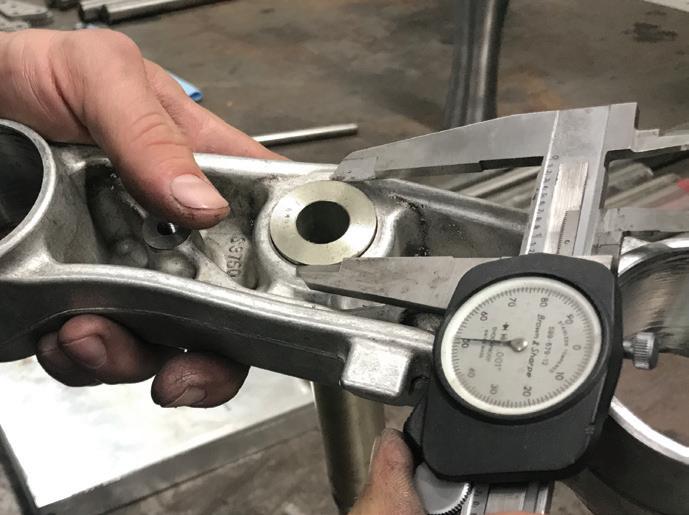
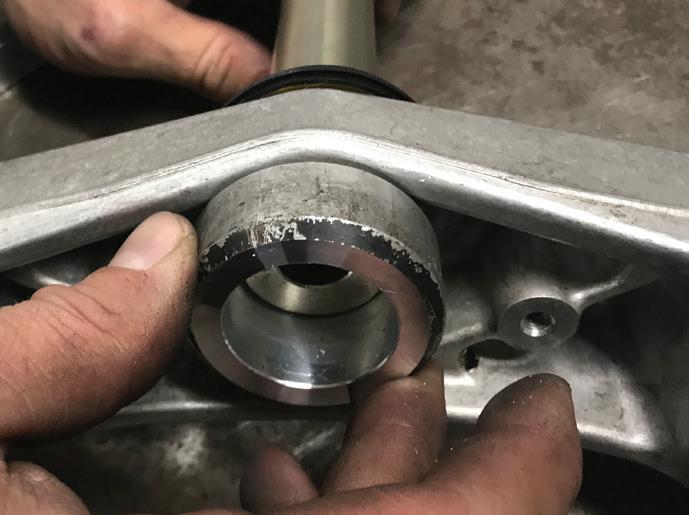
A scrap piece of aluminum just happens to fit the bill. This is a simple and non-critical part. You simply need to offer a flat support to the center of the tree and have a enough center clearance for the stem to slide through.
Heat is applied evenly and gently to the lower tree in order to release any cylindrical Loctite that may have been used by the factory. We have to be patient and careful here. Remember the tree is aluminum. We don’t want to warp or accidently damage the tree.
We setup the lower tree in the press with the support piece below it. The press makes quick work of removing the stem from the tree.
With the stem out, we can make the precise measurements we need to make a new stem that will press back into the lower tree. Calipers are nice for rough measurements, but a micrometer is the proper tool for measuring precision operations like machining a press fit.
After careful measurements, we make a design draft of the conversion stem. This can simply be done on a piece of paper with a pencil and ruler. But it is always a good idea to have a written plan. It’s amazing what you will forget once you get started.
Due to the performance design and


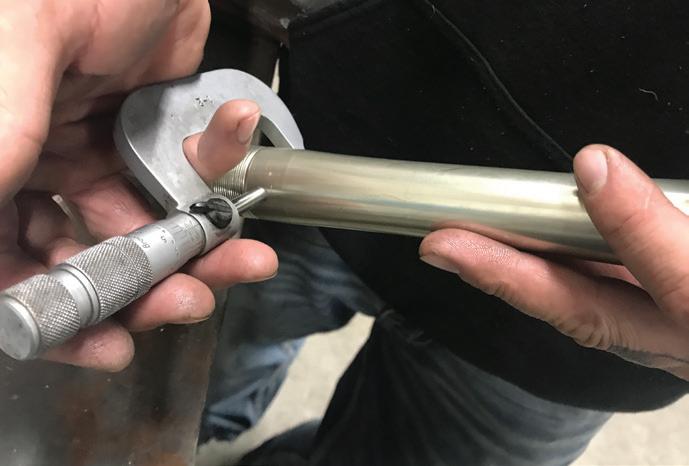



overall lower weight of the GXR, the factory stem is made of hollow aluminum. It is possible for the existing stem to be machined down to accept the 1” bearings for the FXR, but as the wall thickness decreases so does the strength and you have to consider all of the variables and intent. Given the overall design and performance intent Chris has in mind for this new bike, we decide to start fresh and use the same material I use on Faith Forgotten Springers… 17-4 Stainless Steel.
After 30 mins on the lathe we have hit all the critical dimensions of the stem. Time for the fun part.
Point threading on a manual lathe is one of the more exciting and challenging processes that can be performed. If there is enough interest from our readership, it would be fun to write a very in-depth tech on the process. As illustrated here, the basic set up of the tool is extremely critical. The process and setup of the entire lathe is critical in cutting threads.
A very light first pass can be double checked with a thread gauge to insure nothing was missed. A mistake here would force us to scrap this entire piece and start over. Once the threads are cut to depth you should have and amazing fit for the adjustment nut. No matter how many times I perform this operation, the final result is always gratifying.
The horizontal band saw is used to rough cut the remaining stock from the part.
The stem is returned to the lathe to clean up the bottom section. First it is faced to length.
All the edges are deburred and lightly chamfered with a file. Its these basic finishing touches that make all the difference. Far too often I see aftermarket parts that never receive that last bit of presentation. I guess that’s were greed comes in. Take pride in your final product, even when its 3 am and cold outside… The final machining operation needed to complete our late-night adventure is boring the top tree to accept the bearing tension nut and the top nut. Again, we have chosen to use parts from our Faith Forgotten Choppers Springer. In order to bore the top tree, the spindle must be centered using a co axial indicator.
Much like point threading on the late, using a boring bar on a vertical mill is an exciting process. Make sure all the clamps are tight!
Again, we take the time to deburr the top tree after it is removed from the mill, insuring that we completely maintain the level of quality we desire.
Once reassembled, the perfect fit of the top nut securing the tree is extremely gratifying.
With that Chris was on his way to New York IMS and I could finally get some work done. Let me know if you guys want to se more about point threadding on a manual lathe.
